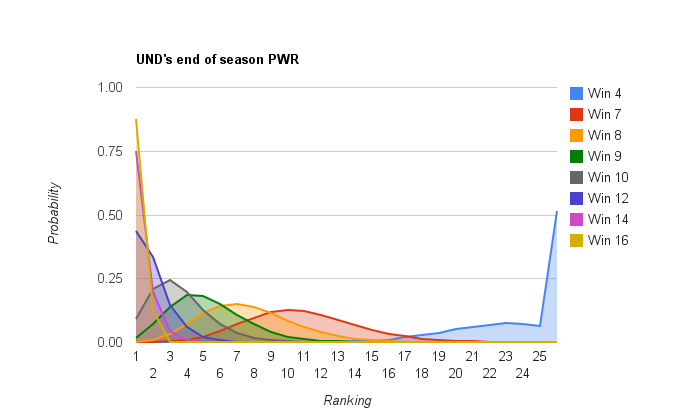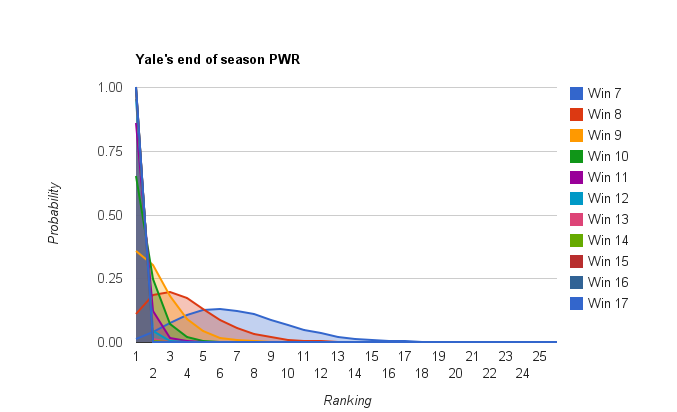When to look at PWR
Though January is the traditional time to start really looking at rankings, UND only has one meaningful game remaining before the new year, so now seems a fine time for a sneak preview.
First, I do want to draw attention to my essay from last year, When to start looking at PWR? Inspired by some humorously early bracketology discussions last Fall, it analyzes when the PWR rankings become useful by looking at two criteria:
- How stable is it week-to-week? If a #1 ranked team is likely to become a #15 ranked team next weekend after a loss or two, then it’s a practically useless measure.
- How good a predictor is the current PWR of the final PWR? The real PWR is only calculated once, once all the games have been played and it’s time to seed the tournament. We’re really only interested in “if the season ended today” PWR calculations because we think they may have some predictive value of those final PWRs.
In short, PWR is wildly unstable until January and doesn’t become a very good predictor of end-of-season PWR until March.
PWR prediction
So, rather than look at PWR itself (what the tournament seeds would be if the season ended today), I’m going to fire up the PWR Predictor and show you what PWR could be at the end of the regular season, based on UND’s performance between now and then.
We knew it intuitively based on the record, but wow is UND in a different place from previous years (potential outcomes as of Feb. 10, 2010 and as of Jan. 29, 2009).
UND seems to already have a pretty solid lock on being a TUC — winning 7 of the remaining 17 almost guarantees it.
Winning just 7 would likely leave UND on the precipice of an at-large bid, while winning 8 would slide the Sioux more comfortably into the tweens.
Do keep in mind how flat some of those curves are, so it’s much more likely for UND to fall into a “tail” — e.g. while the “win 7” curve is centered around #10, it’s only half as likely to be #14 or a quarter as likely to be #16.
Bonus coverage — what’s up with Yale?
There’s been a lot of chatter about whether Yale’s #1 ranking and poll spot is deserved, given the quality of competition they’ve played. One of the questions being asked is how good a job the rankings do at incorporating strength-of-schedule for teams with exceptional win-loss records. The PWR Predictor can help with a question like this by measuring the stability of Yale’s lofty perch atop the rankings. If Yale loses a handful of games and plummets to a more mortal win-loss record, what will happen to their PWR?
It’s a little hard to read because it’s so dense over there near the #1 ranking. Basically, Yale would have to win fewer than 7 of their remaining 17 games to be in likely danger of not being a TUC. With as few as 10 wins they seem almost a lock for a top 4 seed.
Bottom-line: From a PWR perspective, Yale is for real.
Resources
I don’t expect to have anything new to say about PWR for at least a month or two, but data hounds may want to keep an eye on things themselves:

